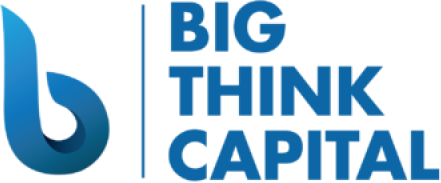Understanding the Impact of Fed Interest Rate Decisions on Your Small Business Financing Options
Estimated Reading Time: 6 minutes
- Understand how Fed interest rate decisions affect borrowing costs and cash flow.
- Learn the pros and cons of working capital advances and merchant cash advances.
- Explore effective strategies for securing financing amidst changing rates.
- Maintain positive relationships with banks to enhance your financing options.
Table of Contents
- How Fed Interest Rates Affect Small Business Loans
- Pros and Cons of Working Capital Advances Amidst Changing Rates
- Smart Strategies for Securing Merchant Cash Advances in a Fluctuating Economy
- Maintaining Positive Bank Relations for Business Growth
- Conclusion
How Fed Interest Rates Affect Small Business Loans
The Federal Reserve, often referred to as the Fed, plays a critical role in determining the economic climate in which small businesses operate. By adjusting interest rates, the Fed influences borrowing costs for businesses and consumers alike. Here’s how these decisions can impact your financing landscape:
1. Borrowing Costs Rise or Fall
When the Fed raises interest rates, borrowing becomes more expensive. This can lead to higher rates for:
- Traditional bank loans
- Lines of credit
- Small Business Administration (SBA) loans
Conversely, when the Fed lowers interest rates, businesses often find themselves in a more favorable position, with the cost of borrowing decreasing, making it easier to secure funding at lower rates.
2. Impact on Cash Flow
Interest rates affect cash flow management, particularly for small businesses relying on loans. Higher interest payments can strain finances, impacting operational budgets and necessitating difficult financial decisions.
3. Access to Capital
As rates fluctuate, lenders may tighten their requirements for approval, making it more challenging for small businesses to secure funding. In contrast, low-interest rates may encourage more lenders to offer favorable terms.
According to a report from the Federal Reserve Bank of St. Louis, small businesses are particularly sensitive to interest rate changes, as they often operate with tight margins and limited access to capital (source: St. Louis Fed). Understanding these impacts enables you to strategize effectively and choose the right financing options.
Pros and Cons of Working Capital Advances Amidst Changing Rates
Working capital advances are a popular choice for small businesses needing immediate cash flow to manage operational expenses, invest in growth, or address unforeseen costs. However, these advances come with both benefits and drawbacks, which are magnified in a fluctuating interest rate environment.
Pros of Working Capital Advances
- Quick Access to Funds: One of the most significant advantages is the speed at which you can access funds. Unlike traditional loans, which can take weeks to process, working capital advances can often be secured in as little as 24-48 hours.
- Flexible Repayment Terms: Payments are usually tied to your daily credit card sales or revenue, which means they adjust based on your business performance. This can relieve financial pressure during slower sales periods.
- No Collateral Required: Most working capital advances do not require collateral, making them accessible to businesses that may not have significant assets to pledge against a loan.
Cons of Working Capital Advances
- Higher Costs: Working capital advances can have higher effective annual percentage rates (APRs) than traditional loans. This makes it essential to understand the total cost of borrowing before committing.
- Short-Term Solution: While effective for immediate cash needs, relying too heavily on advances can lead to a cycle of debt, making long-term financial planning challenging.
- Potential for Payment Burdens: In a fluctuating economy, if sales are not consistent, daily payments can become a burden, complicating cash flow management.
Key Takeaways for Business Owners
- Ensure you fully understand the terms and costs associated with working capital advances before deciding if it’s the right choice for your funding needs.
- Consider your cash flow patterns to determine if flexible payment terms align with your business’s financial health.
Smart Strategies for Securing Merchant Cash Advances in a Fluctuating Economy
Merchant cash advances (MCAs) are another viable option for small businesses looking for immediate access to capital. However, like working capital advances, securing an MCA comes with its own set of considerations, especially in an uncertain interest rate environment.
Strategies for Securing an MCA
- Build a Strong Sales History: MCAs are primarily based on daily credit card sales. Having a robust sales history will improve your chances of securing a favorable advance. Aim to demonstrate consistent growth in sales over the past six months to a year.
- Maintain a Healthy Credit Score: While MCAs take sales into account more than credit scores, a strong credit rating can help you negotiate better terms.
- Showcase Business Stability: Lenders often look for evidence of business stability, such as consistent cash flow and solid profit margins. Prepare thorough documentation that reflects the financial health of your business.
- Understand Fees and Costs: Like working capital advances, MCAs can be expensive. Make sure to comprehend the factor rate used to calculate the total repayment amounts. Working with a trusted broker, like Big Think Capital, can help you evaluate your options effectively.
Practical Insights
- Regularly review your business’s cash flow to anticipate your financing needs and optimize your approach to securing an MCA.
- Use your sales data to create a compelling, transparent application that demonstrates your business’s capacity to repay the advance.
Maintaining Positive Bank Relations for Business Growth
In addition to exploring alternative funding options, maintaining strong relationships with banks is vital for long-term financial success. Here are a few strategies to build and nurture these relationships:
1. Regularly Communicate
Keep an open line of communication with your bank representatives. Updating them on your business progress, challenges, and financial health can help foster a stronger partnership.
2. Diversify Your Banking Relationships
While it’s important to have a primary bank, consider building relationships with multiple institutions. This can provide you with a safety net when seeking funding options during fluctuating economic times.
3. Leverage Bank Programs
Many banks offer programs specifically designed for small businesses, including special financing options or grants. Stay informed about your bank’s offerings and utilize them effectively.
Conclusion
Navigating the complexities of small business financing in today’s economy requires a keen understanding of both market conditions and the available funding options. By staying informed about how Federal Reserve interest rate decisions can impact your access to capital, weighing the pros and cons of working capital advances and merchant cash advances, and fostering strong relationships with financial institutions, you can make informed decisions that support your business’s growth.
At Big Think Capital, we are dedicated to helping you explore the best funding options tailored to your unique needs. Our team of financing experts is ready to assist you in understanding your choices and securing the capital your business deserves. To learn more about how we can help, visit our website or reach out to speak with one of our funding specialists today. Empower your business journey with the insights and support you need to succeed.
FAQ
- How do Fed interest rates affect small businesses?
- What are working capital advances?
- How can I secure a merchant cash advance (MCA)?
- What should I know about maintaining bank relationships?
How do Fed interest rates affect small businesses?
Fed interest rates influence borrowing costs, cash flow, and access to capital, affecting small business operations significantly.
What are working capital advances?
Working capital advances provide businesses with immediate cash flow, typically secured against future sales, to meet operational expenses.
How can I secure a merchant cash advance (MCA)?
Building a strong sales history, maintaining a healthy credit score, and showcasing business stability are key strategies for securing an MCA.
What should I know about maintaining bank relationships?
Regular communication, diversifying banking relationships, and leveraging bank programs are essential for nurturing strong partnerships with banks.






